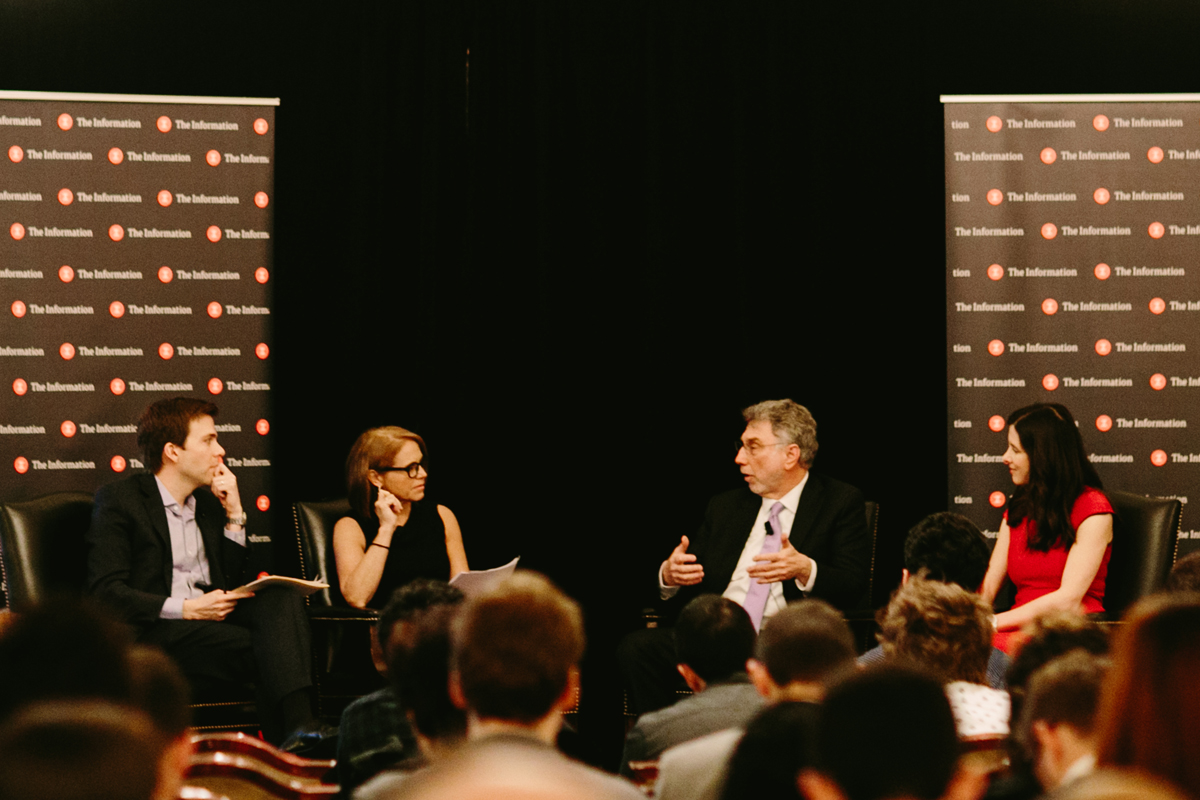Sign up for The Media Today, CJR’s daily newsletter.
News leaders and Silicon Valley executives at a “Subscriber Summit” put on by The Information discussed an array of stubborn challenges against a backdrop of guarded optimism as evidence emerges that more readers are beginning to pay for news. Speakers at the Tuesday event included CNN’s Jeff Zucker, Yahoo News’ Katie Couric, Facebook’s Adam Mosseri, FiveThiryEight’s Nate Silver, and The Washington Post’s Marty Baron.
Here are five key takeaways:
1. Readers are starting to see the value of high quality news—and they are starting to pay for it.
In the aftermath of the heated US presidential election, readers are intensely interested in political news from trusted sources, according to several speakers. “People recognize that if they don’t pay for quality journalism, they are not going to get it,” said Washington Post Executive Editor Marty Baron. Former Wall Street Journal reporter and The Information founder Jessica Lessin added that she believes people will continue to pay for high-quality original journalism (a yearly subscription to The Information costs $399) and trusted commentary. Tweets from The Information’s account during the event included a #subscribersonly hashtag. In her opening keynote speech, Lessin announced a new product called “Briefing,” a tech news aggregator that attempts to improve upon the influential website Techmeme. Lessin is optimistic that her strategy of hiring seasoned reporters, and letting them focus on original work, will produce in-demand work. “Great journalism is a great business,” she said.
2. Fake news is a huge problem for the news business—and there’s no easy solution.
Many of the speakers shared the concern that the “fake news” problem is not going to be solved easily, and is an urgent issue that could cause real damage. Jeff Zucker of CNN was not afraid to point his finger at the Trump Administration for helping cause the climate in which fake news has thrived: “The disrespect this administration has shown for journalists…[is] dangerous for the future of this democracy,” he said. All eyes are on Facebook, as the industry waits to see what steps the platform will take to address the issue, which Facebook CEO Mark Zuckerberg has identified as a top priority. Baron offered praise for Facebook’s initial steps to reduce economic incentives which have been shown to be a driver of fake news on social media. But Baron sounded pessimistic about the chances of being able to stop this problem: “We can’t even agree on what happened yesterday.” Adam Mosseri, Facebook’s vice president of News Feed, said his company is working to fix the “false news” problem, as he calls it. Quora’s founder and CEO Adam D’Angelo proposed that the government should step in to solve the problem: “I think government regulation is a real option at some point.”
3. Artificial intelligence and other technologies can lead to better products, but nobody expects AI to save the day.
Yahoo News’ Katie Couric wondered whether the precipitous decline in newsroom headcounts would be exacerbated by the onset of AI bots cranking out stories, a scenario few panelists seemed worried about. Several speakers were skeptical that AI could be used to solve the fake-news problem anytime soon. D’Angelo said machine learning is “a good tool for integrating signals that are out there,” which could be used to identify fake news, but he was doubtful it could be put to productive use doing actual fact checking.
The role of new technology can be hugely important, however. Quora’s D’Angelo said that they had invested a lot in personalization technology, which makes it much more likely that an engaged expert—say a doctor—will be presented with a question they will be able and willing to answer, eliminating the need for any incentive scheme to get users to answer questions.
4. Filter bubbles are still a problem for both readers and journalists.
Mosseri took an opportunity to highlight a well-worn criticism that journalists have a bubble of their own, with their social platform of choice, Twitter. “I use Twitter to watch journalists talk to each other,” said Mosseri. All panelists who were asked about the filter-bubble phenomenon agreed it was a real problem, and struggled with the best ways to address it. FiveThirtyEight’s Nate Silver reflected on how his site’s 2016 election poll analysis may have affirmed readers’ existing bias: “I know that a lot of people come to FiveThirtyEight for comfort.…I worry about our role in that.”
5. Greater transparency is needed to rebuild the public’s confidence in the press.
Baron recalled the fierce attacks on the press by the Nixon administration in the heat of the Watergate scandal. Baron noted that after Nixon resigned, polls showed a big increase in the public’s trust and confidence of the press. Baron sounded hopeful that the public would come to appreciate the work the press is doing to investigate the current administration. “We have to be more transparent,” said Baron, as he suggested ways to better explain how the news is reported. As an example of this sort of transparency, Baron cited Post reporting by David Fahrenthold, which won the 2017 Pulitzer Prize for National Reporting. (Fahrenthold shared his notes with his Twitter followers while reporting on The Donald J. Trump Foundation’s charitable giving.)
Has America ever needed a media defender more than now? Help us by joining CJR today.



